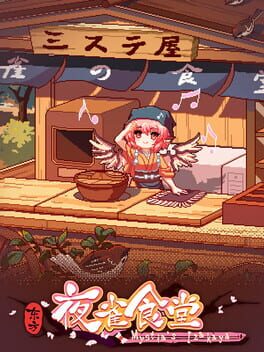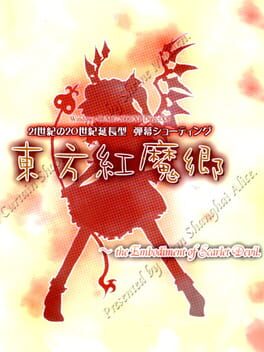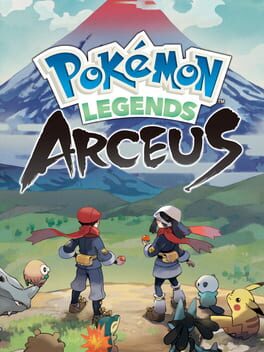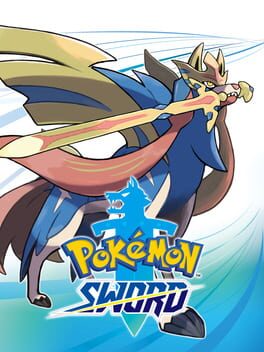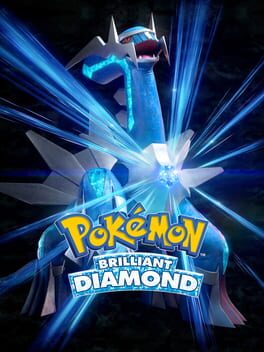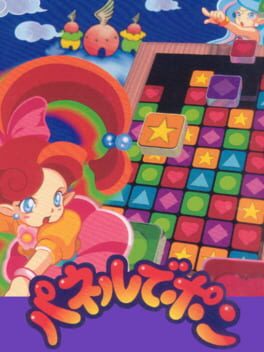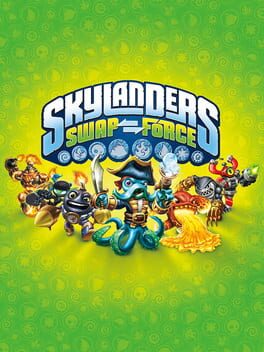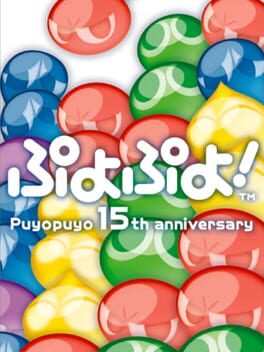FunBus
160 Reviews liked by FunBus
For the first time in a long time, Pokémon has gotten a game in a brand new flavor of gameplay. Pokémon Legends: Arceus isn’t exactly innovative, but it is working with a lot of ambition-requiring components that Game Freak has never even dipped their toes into before. My biggest question going into this game was how much of this would feel arbitrary, and how the gameplay loop compares to previous games. It took me about 20 hours to beat the game, but you could have a 40 hour playthrough as well. With blockbuster mechanics and runtime brings new challenges for the series to overcome.
Going over the presentation of the game, Pokémon Legends takes place in Meiji era Sinnoh, a change in style for the series. The graphics are bad! The art direction is fine. The music is shockingly good for a modern Pokémon game. The soundtrack is still comprised of MIDI, but with much nicer sample choice and fantastic composition. Rather than focusing on straightforward remixes, the bulk of the soundtrack uses abstracted isolated melodies from the original material of Pokémon Diamond and Pearl. The identity to how it uses leitmotifs is unique, you can sense a strong understanding of the original source material through it. The storytelling is lightweight and minimal without emphasis on a singular villain, and the campaign ends abruptly. Despite that, the script is fun; the writers have gotten good at writing these shonen filler episode-flavored miniature character arcs. There’s a bit too much dialogue in some places, though. You have to go through the motions a lot in this game – you don’t just rank up when you get enough points, you have to talk to the professor, and then talk to Cyllene. Overall, I enjoyed the setting and thought it fit the gameplay. This game feels a bit like a spiritual remake. Abstractly revisiting the feelings, aesthetics, and inspirations behind the original Diamond and Pearl, while tiptoeing around directly repeating setpieces or plot.
Pokémon Legends has switched up the formula to take place on huge sprawling maps, and the resulting game design is surprisingly clean. The maps themselves are decent, with a lot of verticality, caves, and secret pathways. Traversing them on the game’s various mounts also felt good, they all have good game feel. This game’s strengths lie in how it rewards the player. These maps are covered with collectibles that trickle down into the content and attributes of your team. Pokémon function both as diverse collectibles and interactive obstacles. The game manages to create a variety of interactions out of surprisingly little; simple formations of Pokémon can heavily encourage specific ways of playing. Sometimes rare shy Pokémon will surround a powerful aggressive Pokémon, and being noticed by just one Pokémon can disrupt the chain of events fast. You get a lot of items to make certain play styles easier, but inventory limitation puts weight on which you bring.
At the center of all the best changes this game makes to the format is the new third person aiming. The seamless nature of catching in this game allows for you to spend exactly as much time as you want on every single Pokémon you see. You can run into a crowd of shy Pokémon like Starly — and if you throw pokéballs at them fast enough, you’ll catch around 3/5ths of them. This is good game math, as it encourages the player to put a little effort into trying to catch everything, but a lot of effort into trying to catch something they really want. The catching of Pokémon Legends has a unique relationship with patience. You can make the game a lot easier for yourself if you catch every single thing in your path, clearing obstacles one at a time. The game rewards this through the new Pokédex system filling out after multiple interactions with a Pokémon, and those entries contribute to your rank. However, playing fast means you’ll find new Pokémon quicker.
Combat has also been massively adjusted to fit the pacing of the game, and how quick each interaction with each Pokémon can go. Pokémon at lower levels have much more HP, and don’t scale as much with each level-up. Catching also seems to only take 1-2 pokéballs as long as a Pokémon is at low health; meaning catching in battle has the same pace as catching in the overworld. You can also adjust how much damage you’ll do with your next attack through styles. These traits in combination empower the player to do as much damage as they want, making catching in battles a whole lot more natural. Trainer battles are still around, but much more sparse, and the mechanical changes don’t show improvement here. The early trainers will only use 1 Pokémon, and with how low HP is, it just felt like the later trainer battles were one-hit KO wars. Defeating higher level wild Pokémon 1 on 1 isn’t very engaging either, since outspeeding has been replaced. Where the combat functions its best is in tense 1 vs 3 situations where you have to catch multiple Pokémon at once. Even if the mechanics behind the combat itself aren’t great, it manages to get some interesting things out of having turn based and overworld combat being separated. This game sets a whole new standard for overworld encounters in modern turn-based RPGs as well, there’s a lot of fun risk and reward between choosing to engage with them or avoid them.
There are also “Noble” Pokémon boss fights, which are entirely action-based boss fights. The first 3 feel like baby Monster Hunter attack patterns, and the rest feel like baby bullet-hell attack patterns. If there were full games of these, they wouldn’t be very fun (but the baby bullet-hell game would be x10 better than the baby Monster Hunter game), but they worked well as refreshing changes of pace. The post-game has a lot of half-action half-combat fights where you have to avoid waves of projectiles in order to start a battle, and catch the Pokémon from there. There should be more of those in the sequel! This isn’t exactly a game I’d replay for the combat, but the combat works fine enough to compliment the collecting.
Pokémon Legends: Arceus is a big step forward, but steps aren’t everything; it’s important to remember where we stand now. And where we stand now happens to be pretty good this time around! From these new mechanics, as well as the new style system, it’s clear that Pokémon is willing to learn from contemporary adventure games and JRPGs. The gameplay also carries the DNA of Pokémon Snap, showing introspection from the developers as well. The most surprising part of that is how naturally it involves big selling point mechanics like crafting and open worlds. New mechanics and world design are tastefully implemented and acknowledge long-time series flaws regarding the unengaging side of catching, and improve upon it. This is the best Pokémon has ever been at monster collection, its tagline mechanic. The new mechanics aren’t actually the part of the game that needs iteration; it’s more about broad aspects like storyline, graphics, and combat. Pokémon’s mainline games have been in 3D for about 8 years, and I found those games to use 3D rather superficially. This game uses 3D with purpose, and it’s a strong purpose too.
Going over the presentation of the game, Pokémon Legends takes place in Meiji era Sinnoh, a change in style for the series. The graphics are bad! The art direction is fine. The music is shockingly good for a modern Pokémon game. The soundtrack is still comprised of MIDI, but with much nicer sample choice and fantastic composition. Rather than focusing on straightforward remixes, the bulk of the soundtrack uses abstracted isolated melodies from the original material of Pokémon Diamond and Pearl. The identity to how it uses leitmotifs is unique, you can sense a strong understanding of the original source material through it. The storytelling is lightweight and minimal without emphasis on a singular villain, and the campaign ends abruptly. Despite that, the script is fun; the writers have gotten good at writing these shonen filler episode-flavored miniature character arcs. There’s a bit too much dialogue in some places, though. You have to go through the motions a lot in this game – you don’t just rank up when you get enough points, you have to talk to the professor, and then talk to Cyllene. Overall, I enjoyed the setting and thought it fit the gameplay. This game feels a bit like a spiritual remake. Abstractly revisiting the feelings, aesthetics, and inspirations behind the original Diamond and Pearl, while tiptoeing around directly repeating setpieces or plot.
Pokémon Legends has switched up the formula to take place on huge sprawling maps, and the resulting game design is surprisingly clean. The maps themselves are decent, with a lot of verticality, caves, and secret pathways. Traversing them on the game’s various mounts also felt good, they all have good game feel. This game’s strengths lie in how it rewards the player. These maps are covered with collectibles that trickle down into the content and attributes of your team. Pokémon function both as diverse collectibles and interactive obstacles. The game manages to create a variety of interactions out of surprisingly little; simple formations of Pokémon can heavily encourage specific ways of playing. Sometimes rare shy Pokémon will surround a powerful aggressive Pokémon, and being noticed by just one Pokémon can disrupt the chain of events fast. You get a lot of items to make certain play styles easier, but inventory limitation puts weight on which you bring.
At the center of all the best changes this game makes to the format is the new third person aiming. The seamless nature of catching in this game allows for you to spend exactly as much time as you want on every single Pokémon you see. You can run into a crowd of shy Pokémon like Starly — and if you throw pokéballs at them fast enough, you’ll catch around 3/5ths of them. This is good game math, as it encourages the player to put a little effort into trying to catch everything, but a lot of effort into trying to catch something they really want. The catching of Pokémon Legends has a unique relationship with patience. You can make the game a lot easier for yourself if you catch every single thing in your path, clearing obstacles one at a time. The game rewards this through the new Pokédex system filling out after multiple interactions with a Pokémon, and those entries contribute to your rank. However, playing fast means you’ll find new Pokémon quicker.
Combat has also been massively adjusted to fit the pacing of the game, and how quick each interaction with each Pokémon can go. Pokémon at lower levels have much more HP, and don’t scale as much with each level-up. Catching also seems to only take 1-2 pokéballs as long as a Pokémon is at low health; meaning catching in battle has the same pace as catching in the overworld. You can also adjust how much damage you’ll do with your next attack through styles. These traits in combination empower the player to do as much damage as they want, making catching in battles a whole lot more natural. Trainer battles are still around, but much more sparse, and the mechanical changes don’t show improvement here. The early trainers will only use 1 Pokémon, and with how low HP is, it just felt like the later trainer battles were one-hit KO wars. Defeating higher level wild Pokémon 1 on 1 isn’t very engaging either, since outspeeding has been replaced. Where the combat functions its best is in tense 1 vs 3 situations where you have to catch multiple Pokémon at once. Even if the mechanics behind the combat itself aren’t great, it manages to get some interesting things out of having turn based and overworld combat being separated. This game sets a whole new standard for overworld encounters in modern turn-based RPGs as well, there’s a lot of fun risk and reward between choosing to engage with them or avoid them.
There are also “Noble” Pokémon boss fights, which are entirely action-based boss fights. The first 3 feel like baby Monster Hunter attack patterns, and the rest feel like baby bullet-hell attack patterns. If there were full games of these, they wouldn’t be very fun (but the baby bullet-hell game would be x10 better than the baby Monster Hunter game), but they worked well as refreshing changes of pace. The post-game has a lot of half-action half-combat fights where you have to avoid waves of projectiles in order to start a battle, and catch the Pokémon from there. There should be more of those in the sequel! This isn’t exactly a game I’d replay for the combat, but the combat works fine enough to compliment the collecting.
Pokémon Legends: Arceus is a big step forward, but steps aren’t everything; it’s important to remember where we stand now. And where we stand now happens to be pretty good this time around! From these new mechanics, as well as the new style system, it’s clear that Pokémon is willing to learn from contemporary adventure games and JRPGs. The gameplay also carries the DNA of Pokémon Snap, showing introspection from the developers as well. The most surprising part of that is how naturally it involves big selling point mechanics like crafting and open worlds. New mechanics and world design are tastefully implemented and acknowledge long-time series flaws regarding the unengaging side of catching, and improve upon it. This is the best Pokémon has ever been at monster collection, its tagline mechanic. The new mechanics aren’t actually the part of the game that needs iteration; it’s more about broad aspects like storyline, graphics, and combat. Pokémon’s mainline games have been in 3D for about 8 years, and I found those games to use 3D rather superficially. This game uses 3D with purpose, and it’s a strong purpose too.
Pokémon Sword
2019
This review contains spoilers
Pokémon Sword and Shield are almost 3 years old, and we’re already moving onto the next major Pokémon game already. It felt like it was the right time to revisit these games. Pokémon Sword and Shield have the unique placement of being the series’ first mainline console game. They also released on the Switch, when every other Nintendo series were reinventing themselves. To say that Sword and Shield were sitting on a hotspot of expectations would be an understatement, but by launch we all knew what kind of game this was. Pokémon Sword and Shield is an iterative sequel that’ll be placed right next to all the other iterative sequels. However, that isn’t an objectively bad thing, and that’s exactly why I want to see where it stands in the series.
To summarize the presentation, these games follow up Pokémon Sun and Moon’s style without much change. The soundtrack is alright, but uses some real terrible MIDI samples in some places. Some songs are hit harder by this than others. Graphically, they use a cell shading-like shader with some coloured outlines. Bloom effects loudly sheen off every Pokémon model. The game looks the most polished in towns, the routes have some weird assets but look fine, and the open Wild Areas have tons of graphical hijinks. There isn’t much to add to the graphics conversation, so to comment on the positive improvements: While 90% of moves still generically apply to Pokémon when they use it, this game introduces a handful of unique moves that compliment the Pokémon they’re attached to well. The trainer animations during battle also have a ton of character appeal. The negatives culminate in a game that doesn’t feel as polished as the average Nintendo game.
Most Pokémon games have minimal storytelling, but this one is a bit different. Similar to some of the recent games, a combination of cutscenes and extra dialogue puts a bit more dramatic focus on the story. The story vaguely uses Britain’s competitive sports culture as a pastiche for a competition fueled region, which works pretty well. Your rival is Hop, who’s one of the best rivals in the series, primarily because his arc is honest. He’s anxious about living up to his older brother and childhood friend, but realizes that competition isn’t all there is to life and uses his experiences to find new passions. It’s cute, and smarter than most rivals having their arcs get smashed by the protagonist. The rest of the rivals are also pretty likable, so it’s the plot climax where the game gets messy. The story of Eternatus just isn’t great at all, its backstory is so messy. The plot tries to make the antagonist morally gray, but doesn’t elaborate on their motivations enough. And don’t get me started on Sordward or Shielbert. While the rivals improve from the extra dialogue, the villains have too much dialogue paired with a nothing plotline. The plot never even gets the chance to explain what exactly Dynamax is.
Dynamax features as this game’s main battle gimmick, and it’s not all bad. Every “Max move” has this synergetic side effect that results in cool team-up attack moments during player battles. Unfortunately, there’s only one Dynamax double battle in the whole campaign, so most players won’t see any of that. Dynamax lacks appeal to most players because it’s a nonsense concept, titled with a nonsense name, with no worldbuilding or visual appeal to at least make it cool nonsense. There are at least Gigantamax forms that change in design, but these are elusive and impossible to obtain on your playthrough without grinding. This is the most a mainline Pokémon gimmick has felt dead on arrival, the game didn’t even try to make it seem cool to people.
Max Raids are a new multiplayer co-op mode, and they offer a unique way to interact with the game socially that Pokémon didn’t really have before. Getting to team up with 3 friends is great, though they lack a bit in variety. There are some hard ones once you beat the game, but the shields they gain during parts of the fight ignore super effective moves and status effects, making strategy repetitive. This is a wonderful feature on paper, but it definitely needs some iterating. Other than these two new mechanics, the combat is the same as it always has been.
However, when you rank formulaic sequels against their precursors, content depth stands out just as much as gameplay iteration. This game does contain a 15-20 hour campaign with an hour long post-game quest, and a handful of things to grind out. This is like every game. It also has the least amount of routes in any Pokémon game, doesn’t have any optional areas at all, has very few side quests, no super-bosses, and barely any daily events. It’s the first game in the series to not have every existing Pokémon, but I couldn’t tell you how many more hours I would’ve gotten out of being able to use a Weedle. Probably not any at all, but it’s clear that Sword and Shield cut down both the fat and the meat. What this does tell me is that Pokémon at its most lean is still a sizable experience, with cooperating with friends to complete the Pokédex, and some online battling and shiny hunting. I also know that most players and most playthroughs are never going to touch any of that stuff, so for the sake of most players, make the campaigns good.
The biggest new tagline feature of Pokémon Sword and Shield is the Wild Area. The Wild Area was advertised as a home console-worthy innovation, immediately drawing comparisons to the concepts and innovation of games such as Breath of the Wild. I can’t say with certainty that there wasn’t any inspiration coming from contemporary Switch releases, but the Wild Area is more about Pokémon Go than anything else. The Wild Area is a reaction to Pokémon Go, analyzing what exactly made catching so tantalizing for people. This comes back to the conceptual start of the series, as Pokémon was one of the first series to take advantage of social experience for playing through a single player campaign. The amount of choices that comes with being able to build a team out of 150 monsters make your teams feel inherently personalized. This makes everything from teams to finding a Pokémon in the wild for the first time feel like something worth sharing. We see this trend across the games industry now, with scores and gacha results being posted all over social media. Pokémon Go richly takes advantage of the core of these traits. Both the original Pokémon games and Pokémon Go play to our wants for personalization, our sense of discovery, and our likening to be rewarded for exploration. Pokémon Sword and Shield analyze this through the vein of a central hub of Pokémon discovery moments. It plays a video game magic trick; visibly dangling hundreds of personalized options for the player to pick from, urging us to tell our friends about our teams later. Unfortunately, this is a one trick magic show, as the discovery factor fades on most playthroughs the moment we’ve caught enough to form a team. The terrain we explore is flat and without secrets, and the game doesn’t have satisfying movement that makes exploring it feel good either. And while this isn’t a new issue, the rigid numbers game of catching feels much more like it’s interrupting the game flow in an RPG like Sword and Shield. This isn’t an issue in Pokémon Go, since catching is the entire game. I don’t think the Wild Area made catching feel more interesting, it didn’t make me want to complete the Pokédex. Despite that, the magic trick still worked on me, about once per playthrough. Gawking at the jumbles of options that form the Wild Area was a unique experience. The center of these games really is the Pokémon choices.
Lastly, that brings me to the new Pokémon. I can’t objectively summarize things these Pokémon do right or wrong on a visual design level, as aesthetic issues I have with the Pokédex aren’t easy to summarize. Most of the designs are clean, some use some gaudy neon palettes, but that’s about it for broad aesthetic issues. Where I run into issues is in their origins and inspirations. The Galar region is based on Great Britain, and I can’t help but find its inspirations too superficial. Almost every new Pokémon is a species repeat; the starter Pokémon aren’t based on animals that live in Britain, and the new legendaries are all simplistic medieval knights and dragons reference. Regional variants were introduced in Pokémon Sun and Moon as a reference to divergent evolution, but end up being used in this game only to apply references to Britain to existing Pokémon. It fixates more on fictionally exaggerated royalty than the actual real world Britain. This superficiality doesn’t take away from the enjoyment of individual designs. I still liked a handful of new Pokémon; Corviknight and Falinks being highlights. It just made me question why they chose Britain in the first place, if they were interested in such a small slice of its history and wildlife. It was equally hard to ignore that it felt like the game didn’t care about the new Pokémon. Almost none of the new Pokémon show up in the Wild Area, or even in overworld encounters on routes. Lots of them are locked behind shaking grass-random encounters and appear only at 1% chances. This statistically obscured availability felt like the game was trying to urge me to stick to the Charizards and avoid the new stuff.
The game also got a DLC expansion in 2020, which was pretty cool. It directly responded to some of my critiques listed earlier on: with better verticality in its level design, more Galar Pokémon integrated into the overworld, and a new form of max raids that don’t use shields. The main issue is these expansions aren’t formatted great; there are almost no battles and their content depth heavily relies on if you want to complete the Pokédex. However, Pokémon being integrated into an overworld of diverse biomes definitely makes catching more interesting, even if the game design isn’t improved.
This game taught me a lot about how I interact with this series, and my standards for it. I put a lot more hours into this game than Sun and Moon. I completed the Pokédex, I traded and raided with friends, and I did a ton of wifi battling. And yet, I never ended up feeling a love-hate relationship with the game, despite all these problems I had with it. This led me to concluding that the controversy of Pokémon Sword and Shield was an expectations game. At the center of this web of biases, I feel conflicted knowing I want to criticize this game’s faults, knowing that I wished the game took bigger steps. And knowing at the same time, if someone asked me for a recommendation, I’d say something like “yeah it’s like pretty fun i guess”. Maybe the formula of Pokémon has been so cleanly refined over the years, that if you take advantage of every feature, you’ll always have a “pretty fun” time with it. And maybe it’s that fine line between adequacy and mediocrity that will always turn fans into dreamers.
To summarize the presentation, these games follow up Pokémon Sun and Moon’s style without much change. The soundtrack is alright, but uses some real terrible MIDI samples in some places. Some songs are hit harder by this than others. Graphically, they use a cell shading-like shader with some coloured outlines. Bloom effects loudly sheen off every Pokémon model. The game looks the most polished in towns, the routes have some weird assets but look fine, and the open Wild Areas have tons of graphical hijinks. There isn’t much to add to the graphics conversation, so to comment on the positive improvements: While 90% of moves still generically apply to Pokémon when they use it, this game introduces a handful of unique moves that compliment the Pokémon they’re attached to well. The trainer animations during battle also have a ton of character appeal. The negatives culminate in a game that doesn’t feel as polished as the average Nintendo game.
Most Pokémon games have minimal storytelling, but this one is a bit different. Similar to some of the recent games, a combination of cutscenes and extra dialogue puts a bit more dramatic focus on the story. The story vaguely uses Britain’s competitive sports culture as a pastiche for a competition fueled region, which works pretty well. Your rival is Hop, who’s one of the best rivals in the series, primarily because his arc is honest. He’s anxious about living up to his older brother and childhood friend, but realizes that competition isn’t all there is to life and uses his experiences to find new passions. It’s cute, and smarter than most rivals having their arcs get smashed by the protagonist. The rest of the rivals are also pretty likable, so it’s the plot climax where the game gets messy. The story of Eternatus just isn’t great at all, its backstory is so messy. The plot tries to make the antagonist morally gray, but doesn’t elaborate on their motivations enough. And don’t get me started on Sordward or Shielbert. While the rivals improve from the extra dialogue, the villains have too much dialogue paired with a nothing plotline. The plot never even gets the chance to explain what exactly Dynamax is.
Dynamax features as this game’s main battle gimmick, and it’s not all bad. Every “Max move” has this synergetic side effect that results in cool team-up attack moments during player battles. Unfortunately, there’s only one Dynamax double battle in the whole campaign, so most players won’t see any of that. Dynamax lacks appeal to most players because it’s a nonsense concept, titled with a nonsense name, with no worldbuilding or visual appeal to at least make it cool nonsense. There are at least Gigantamax forms that change in design, but these are elusive and impossible to obtain on your playthrough without grinding. This is the most a mainline Pokémon gimmick has felt dead on arrival, the game didn’t even try to make it seem cool to people.
Max Raids are a new multiplayer co-op mode, and they offer a unique way to interact with the game socially that Pokémon didn’t really have before. Getting to team up with 3 friends is great, though they lack a bit in variety. There are some hard ones once you beat the game, but the shields they gain during parts of the fight ignore super effective moves and status effects, making strategy repetitive. This is a wonderful feature on paper, but it definitely needs some iterating. Other than these two new mechanics, the combat is the same as it always has been.
However, when you rank formulaic sequels against their precursors, content depth stands out just as much as gameplay iteration. This game does contain a 15-20 hour campaign with an hour long post-game quest, and a handful of things to grind out. This is like every game. It also has the least amount of routes in any Pokémon game, doesn’t have any optional areas at all, has very few side quests, no super-bosses, and barely any daily events. It’s the first game in the series to not have every existing Pokémon, but I couldn’t tell you how many more hours I would’ve gotten out of being able to use a Weedle. Probably not any at all, but it’s clear that Sword and Shield cut down both the fat and the meat. What this does tell me is that Pokémon at its most lean is still a sizable experience, with cooperating with friends to complete the Pokédex, and some online battling and shiny hunting. I also know that most players and most playthroughs are never going to touch any of that stuff, so for the sake of most players, make the campaigns good.
The biggest new tagline feature of Pokémon Sword and Shield is the Wild Area. The Wild Area was advertised as a home console-worthy innovation, immediately drawing comparisons to the concepts and innovation of games such as Breath of the Wild. I can’t say with certainty that there wasn’t any inspiration coming from contemporary Switch releases, but the Wild Area is more about Pokémon Go than anything else. The Wild Area is a reaction to Pokémon Go, analyzing what exactly made catching so tantalizing for people. This comes back to the conceptual start of the series, as Pokémon was one of the first series to take advantage of social experience for playing through a single player campaign. The amount of choices that comes with being able to build a team out of 150 monsters make your teams feel inherently personalized. This makes everything from teams to finding a Pokémon in the wild for the first time feel like something worth sharing. We see this trend across the games industry now, with scores and gacha results being posted all over social media. Pokémon Go richly takes advantage of the core of these traits. Both the original Pokémon games and Pokémon Go play to our wants for personalization, our sense of discovery, and our likening to be rewarded for exploration. Pokémon Sword and Shield analyze this through the vein of a central hub of Pokémon discovery moments. It plays a video game magic trick; visibly dangling hundreds of personalized options for the player to pick from, urging us to tell our friends about our teams later. Unfortunately, this is a one trick magic show, as the discovery factor fades on most playthroughs the moment we’ve caught enough to form a team. The terrain we explore is flat and without secrets, and the game doesn’t have satisfying movement that makes exploring it feel good either. And while this isn’t a new issue, the rigid numbers game of catching feels much more like it’s interrupting the game flow in an RPG like Sword and Shield. This isn’t an issue in Pokémon Go, since catching is the entire game. I don’t think the Wild Area made catching feel more interesting, it didn’t make me want to complete the Pokédex. Despite that, the magic trick still worked on me, about once per playthrough. Gawking at the jumbles of options that form the Wild Area was a unique experience. The center of these games really is the Pokémon choices.
Lastly, that brings me to the new Pokémon. I can’t objectively summarize things these Pokémon do right or wrong on a visual design level, as aesthetic issues I have with the Pokédex aren’t easy to summarize. Most of the designs are clean, some use some gaudy neon palettes, but that’s about it for broad aesthetic issues. Where I run into issues is in their origins and inspirations. The Galar region is based on Great Britain, and I can’t help but find its inspirations too superficial. Almost every new Pokémon is a species repeat; the starter Pokémon aren’t based on animals that live in Britain, and the new legendaries are all simplistic medieval knights and dragons reference. Regional variants were introduced in Pokémon Sun and Moon as a reference to divergent evolution, but end up being used in this game only to apply references to Britain to existing Pokémon. It fixates more on fictionally exaggerated royalty than the actual real world Britain. This superficiality doesn’t take away from the enjoyment of individual designs. I still liked a handful of new Pokémon; Corviknight and Falinks being highlights. It just made me question why they chose Britain in the first place, if they were interested in such a small slice of its history and wildlife. It was equally hard to ignore that it felt like the game didn’t care about the new Pokémon. Almost none of the new Pokémon show up in the Wild Area, or even in overworld encounters on routes. Lots of them are locked behind shaking grass-random encounters and appear only at 1% chances. This statistically obscured availability felt like the game was trying to urge me to stick to the Charizards and avoid the new stuff.
The game also got a DLC expansion in 2020, which was pretty cool. It directly responded to some of my critiques listed earlier on: with better verticality in its level design, more Galar Pokémon integrated into the overworld, and a new form of max raids that don’t use shields. The main issue is these expansions aren’t formatted great; there are almost no battles and their content depth heavily relies on if you want to complete the Pokédex. However, Pokémon being integrated into an overworld of diverse biomes definitely makes catching more interesting, even if the game design isn’t improved.
This game taught me a lot about how I interact with this series, and my standards for it. I put a lot more hours into this game than Sun and Moon. I completed the Pokédex, I traded and raided with friends, and I did a ton of wifi battling. And yet, I never ended up feeling a love-hate relationship with the game, despite all these problems I had with it. This led me to concluding that the controversy of Pokémon Sword and Shield was an expectations game. At the center of this web of biases, I feel conflicted knowing I want to criticize this game’s faults, knowing that I wished the game took bigger steps. And knowing at the same time, if someone asked me for a recommendation, I’d say something like “yeah it’s like pretty fun i guess”. Maybe the formula of Pokémon has been so cleanly refined over the years, that if you take advantage of every feature, you’ll always have a “pretty fun” time with it. And maybe it’s that fine line between adequacy and mediocrity that will always turn fans into dreamers.
When people talk about this game, one of the first words mentioned always seems to be 'nostalgia'. But playing through this remake, I didn't really get a sense of nostalgia at all. With the way they interpreted the original game's style, it kinda feels like looking at a game I've already played through a microscope and seeing all the dirt on it. On the bright side, Sinnoh is still Sinnoh, the most atmosphere-rich Pokemon has ever been, with authentic references to folklore and religion, and the villains are still pretty cute new world order obsessed 2000s cult analysis parodies, and some of those bigger routes are still a joy to explore! The game's quality is preserved, at the very least, although there are some places that feel like direct downgrades, like the visuals, the contests, interacting with the poketch, and especially the music, but there are some upgraded spots too. Being able to experience the game's online in 2021 without hassle is also pretty nice. And I think the Grand Underground is pretty cool, it's like if you split up the Wild Area into being shaped like a Zelda dungeon. They also gave a lot of important trainers really good AI and movesets, fighting competitive strategies in the middle of my campaign made me feel like I was playing a ROM hack. But the real kicker is this game's dedication to be faithful to Diamond and Pearl specifically. Even field encounter sheets and trainer teams are copied straight over, only with movesets edited. I didn't realize how much better Platinum was until I played this game, and I don't even really understand why the developers were so dedicated to avoid that game. Going into it, I assumed it was a budget cut decision, but the way it was ignored, even for simple lines of script like route encounters, confused me so much I didn't even realize the Pokemon I wanted to use weren't in the main-story campaign until I read through Serebii. Pokemon Brilliant Diamond and Shining Pearl are remakes dedicated to not being the best version of Sinnoh. What's the point of a remake if the game is too scared to even be the best version of the game it's remaking?
I ended up settling on the number 3.5 as my rating because it's what felt fair to rating the game as a video game, and not a remake. Sinnoh is a really good place, with a lot of really good content. This is reasonably still the biggest Pokemon region ever, even with the engine cleaned up so exploring it doesn't feel so slow. The only thing I'm left to say about it is that this game is only really worth playing if you want to feel involved in the Pokemon community's current online networks, or if you physically cannot play Pokemon Platinum. If you missed some aspects of modern Pokemon, I'd recommend playing Renegade Platinum, the definitive quality-of-life cleanup ROM hack. I know comparing fan works and real games sounds sketchy, but a fanmade remake largely made out of minor script changes shouldn't be so uncontestable from a huge company's retail price product. I can't say I didn't enjoy my time with the game, at the very least. And I'll probably play a bunch more, just because I like Sinnoh's post-game that much. I've even seen this game turn some heads that previously weren't as receptive to the Gen 4 games, due to its faster gameplay. Though, on the other hand, these games were made in Unity, which means that they remade the Pokemon engine in Unity as fast as possible to get this game finished. They're the glitchiest Pokemon games since the first Pokemon games. But with Sinnoh's retained quality, they're also the best Pokemon games since the good Pokemon games. Pokemon Brilliant Diamond and Shining Pearl are the most confusing remakes I've ever played.
EDIT 2 MONTHS LATER: i think i was way too nice to this game, it's just so redundant in comparison to other games it has no reason to exist. Sorry Brilliant Diamond I will never play you to completion again
I ended up settling on the number 3.5 as my rating because it's what felt fair to rating the game as a video game, and not a remake. Sinnoh is a really good place, with a lot of really good content. This is reasonably still the biggest Pokemon region ever, even with the engine cleaned up so exploring it doesn't feel so slow. The only thing I'm left to say about it is that this game is only really worth playing if you want to feel involved in the Pokemon community's current online networks, or if you physically cannot play Pokemon Platinum. If you missed some aspects of modern Pokemon, I'd recommend playing Renegade Platinum, the definitive quality-of-life cleanup ROM hack. I know comparing fan works and real games sounds sketchy, but a fanmade remake largely made out of minor script changes shouldn't be so uncontestable from a huge company's retail price product. I can't say I didn't enjoy my time with the game, at the very least. And I'll probably play a bunch more, just because I like Sinnoh's post-game that much. I've even seen this game turn some heads that previously weren't as receptive to the Gen 4 games, due to its faster gameplay. Though, on the other hand, these games were made in Unity, which means that they remade the Pokemon engine in Unity as fast as possible to get this game finished. They're the glitchiest Pokemon games since the first Pokemon games. But with Sinnoh's retained quality, they're also the best Pokemon games since the good Pokemon games. Pokemon Brilliant Diamond and Shining Pearl are the most confusing remakes I've ever played.
EDIT 2 MONTHS LATER: i think i was way too nice to this game, it's just so redundant in comparison to other games it has no reason to exist. Sorry Brilliant Diamond I will never play you to completion again
